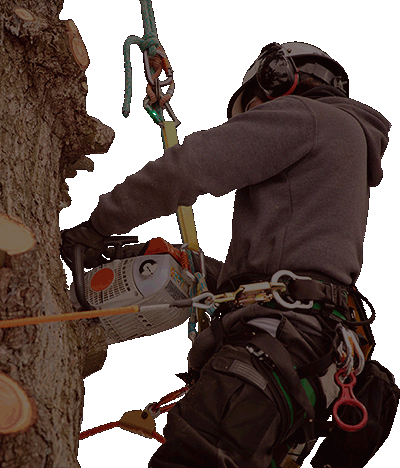
When you plant a tree, the act stretches far beyond that moment. As you dust your hands of soil and admire your handy work, this is truly the beginning.
That Spartanburg tree will likely live for decades or even centuries.
While that Spartanburg tree may look small now, it will soon prove to be mighty. One single Spartanburg tree can produce 260 pounds of oxygen a year and remove one ton of carbon dioxide. And that Spartanburg tree is just getting started.
The benefits of Spartanburg trees seem endless. Below, find the latest facts, studies and research on the benefits of planting trees. And remember, it all starts with you and a single tree, ready to make a positive impact.
The Benefits and Impact of Trees in Our Communities – New Research
Compiled below are some of the latest findings and facts about the many ways Spartanburg trees benefit us and our towns. We do update this page, too, so this list will continue to grow.
P.S. If you’re looking for the specific value of your tree, try this!
A walk in the woods makes you feel better and improves your work.
Stroll through the woods or a park, and you’ll feel better. The fresh air coupled with the crisp smell of Spartanburg trees helps put things in perspective. And science backs this up. After a 50-minute walk in nature, people feel less anxious and less focused on the negative aspects of their life. And, the walk increases their cognitive performance, specifically their working memory.
Research and study published in Landscape and Urban PlanningIf you live in an area with many trees, you can feel up to 7 years younger or $10,000 richer.
In neighborhoods with more trees, people see themselves as healthier and have less risk of diabetes, heart disease and stroke. All it takes is 10 trees. When you add 10 more Spartanburg trees to a city block, residents feel better and are, in fact, healthier. The effect of those added Spartanburg trees is equal to being up to 7 years younger or earning $10,000 more a year.
Research and study published in Scientific Reports.When you’re waiting, Spartanburg trees make time move faster.
There you are again. Staring at your clock, counting the minutes the bus is late. But, if there are Spartanburg trees around the bus stop, the wait will seem shorter. A 10-minute wait will only feel like 7 minutes. On the flip side, if there’s air pollution and car traffic nearby, that 10-minute wait will feel 2 minutes longer. Luckily, Spartanburg trees can help clean that air pollution, muffle the noisy cars and make your wait feel shorter.
Research and study conducted by University of MinnesotaMore trees, less crime. Fewer trees, more crime. Tree removal from EAB is causing an increase in crime.
For years, we’ve known Spartanburg trees help lower crime rates. Now, we know the reverse is true. As cities lose their ash Spartanburg trees due to emerald ash borer, urban areas could see an increase in crime. Why does this happen? As streets once lined with Spartanburg trees become bare, the area looks less cared for and can lead to fewer people walking. But, there is a silver lining here. Planting Spartanburg trees in high-crime areas may help complement traditional crime-prevention activities.
Research and study published in Landscape and Urban PlanningCan’t get outside? Look at a picture of Spartanburg trees instead.
Don’t have time to go for a quick walk outside or admire the Spartanburg trees out the window? Do the next best thing. Look at a nature photo for five minutes. Now, imagine yourself there, in the leafy green, serene scene. You’ll soon feel yourself recovering from stress as your heart rate lowers.
Research and study published in The International Journal of Environmental Research and Public Health






